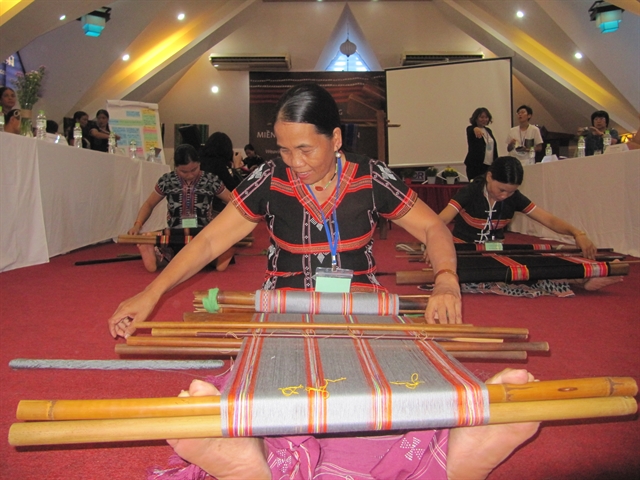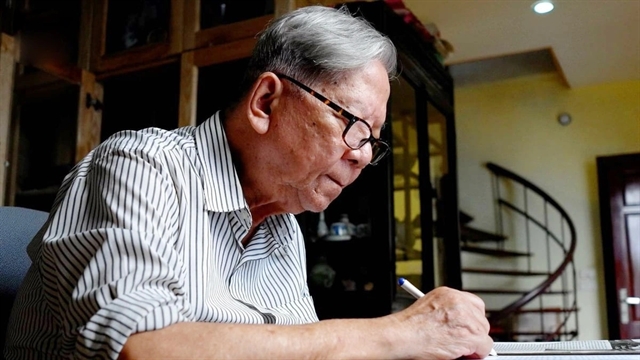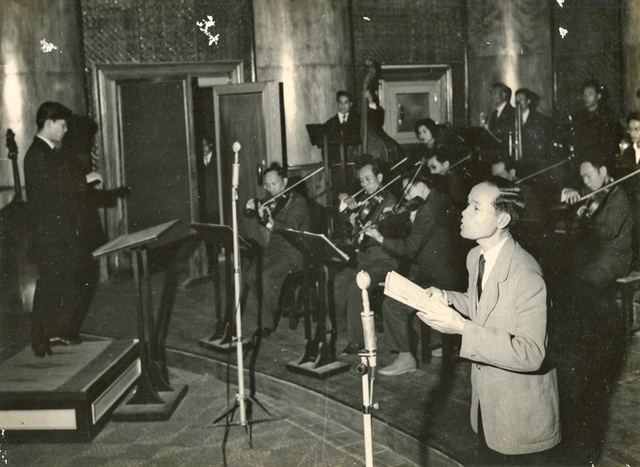 Inner Sanctum
Inner Sanctum

Over two moving nights on July 24 and 25, the Hồ Gươm Opera House in Hà Nội played host to For Generations to Come, a grand concert honouring the life and music of the late composer Hoàng Vân. The event also marked the official presentation of a UNESCO certificate recognising his body of work as part of the Memory of the World Register.
Minh Minh and Quỳnh Hoa sat down with Lê Y Linh, Hoàng Vân’s daughter and co-writer of the musical script, to talk about crafting the tribute, navigating her father’s vast legacy, and why his music still matters.
 |
| Lê Y Linh, PhD, is affiliated with the Institute of Modern and Contemporary History and the Centre for Southeast Asian Studies in France. Photo courtesy of Lê Y Linh |
Inner Sanctum: Congratulations on UNESCO’s recognition of your father’s work. What did it feel like to take on the task of writing the musical script for such a monumental tribute?
It was both a great honour and an enormous responsibility. My father, Hoàng Vân, was a composer of remarkable depth and vision. His music is deeply rooted in the Vietnamese spirit and collective memory. Writing the script wasn’t just about arranging songs – it was about telling a story. A musical journey that mirrors the country’s transformation from wartime hardship to postwar renewal. Curating his works to craft this narrative was an emotionally rich and challenging process.
Inner Sanctum: Why was the concert titled For Generations to Come?
The title comes from a lyric in his 1973 symphonic suite Bài Ca Xây Dựng (The Song of Construction): “For today, for tomorrow, for generations to come.” That line seems to capture the enduring relevance and vitality of my father’s work. When UNESCO recognised his collection, it reaffirmed this very idea – that his legacy isn’t static or confined to history. It’s alive. This title is our tribute, not only to him but also to the audience, now and in the future.
 |
| Composer Hoàng Vân left behind an extraordinary legacy of over 700 diverse musical works spanning multiple genres and forms. Photo courtesy of the family |
Inner Sanctum: What elements of the concert captured Hoàng Vân's spirit most vividly?
We focused on highlighting Vietnamese identity through folk melodies, poetic lyrics, and traditional instruments – but most importantly, through human emotion. Even in war-themed works, there’s always room for tears and laughter.
The script follows a seamless flow, weaving epic themes with more personal small stories inside each piece. Several segments explore the intersection between Vietnamese traditional folklore and Western symphonic style – hallmarks of Hoàng Vân’s music. You hear the essence of Vietnamese culture in everything, from his poetry-inspired phrases to the folk rhythms of different regions.
We also created intentional contrasts: the romantic Tâm Tình Người Thủy Thủ (Sailors' Confidence) beside the triumphant Việt Nam Muôn Năm (Long Live Việt Nam); and the maternal tenderness of Hát Ru Trong Đêm Pháo Hoa (Lullaby Under Fireworks) leading into the optimistic Bài Ca Xây Dựng (The Song of Construction), written just after the 1973 Paris Peace Accords. These contrasts reflect both his emotional range and the spirit of national resilience.
Inner Sanctum: What was the biggest challenge in preparing the programme?
Choosing from such an immense body of work. Many songs are etched in the memory of a generation, while others such as symphonies or choral works are complex and rarely performed. There are lesser-known versions and arrangements, too. We had to balance representativeness with emotional impact to ensure a coherent flow that mirrored the nation’s evolution through his music.
Another challenge was keeping the original spirit intact while updating the performance for today’s audience and the state-of-the-art stage of Hồ Gươm Opera House. That meant working closely with our artistic team, especially my brother Lê Phi Phi, to find solutions that were both technically and artistically sound.
 |
| Hoàng Vân conducting an orchestra in Hà Nội in the early 1960s. Photo courtesy of the family |
Inner Sanctum: If you had to pick one piece that defines your father’s musical legacy, what would it be?
That’s incredibly difficult, but Lullaby Under Fireworks comes to mind. He wrote it in 1975, right after reunification. As the era of resistance war songs faded, he composed a series of lullabies to honour mothers who had sacrificed so much during war time.
Peace had finally returned, and the mother could now sing to make her child go to sleep in a night under a sky lit not by bomb explosions but by fireworks. It’s both poignant and full of hope.
Inner Sanctum: From a researcher’s point of view, what sets Hoàng Vân apart in the history of Vietnamese modern music?
He was part of a generation that played a pivotal role in formalising Vietnamese music – blending traditional motifs with Western classical forms. His genius lay in making academic music emotionally accessible.
Take this line from his 1968 anthem Chào Anh Giải Phóng Quân, Chào Mùa Xuân Đại Thắng (Salute to the Liberation Army, Salute to the Great Spring Victory): “In the young eyes’ corners, smiles fall with tears.” That’s pure humanity.
His use of folk materials was never superficial; it was transformative. He reimagined and revitalised those roots, and many examples of this were showcased in the concert.
Inner Sanctum: What do you hope younger generations will take away from Hoàng Vân’s music?
That his music, and that of his peers, are not relics. They’re living legacies. He wrote about people, love, work, and country from the heart. Each piece is a slice of our collective memory and a finely drawn portrait of Vietnamese history.
More than just war and hardship, I want audiences to remember the beauty, the hope, and the humanity in his work.
I hope younger listeners will approach this legacy with curiosity and appreciation. And that concerts like these open the door for more performances of other great Vietnamese composers of his time. VNS
Box: About the Composer
Composer Hoàng Vân was born Lê Văn Ngọ in 1930 and passed away in 2018. A towering figure in Vietnamese music, he created more than 700 works across multiple genres: songs, choral pieces, symphonies, chamber music, film scores, children's music, and more.
His compositions blend classical European structures with Vietnamese folk traditions, making them not only artistically significant but also invaluable records of Việt Nam’s cultural, social and historical evolution.
His most iconic works include Bài Ca Xây Dựng (The Song of Construction), Hò Kéo Pháo (The Artillery-Pulling Chant), Người Chiến Sĩ Ấy (That Soldier), Tôi Là Người Thợ Lò (I Am a Coal Miner), Quảng Bình Quê Ta Ơi (Quảng Bình, My Beloved Land), Nổi Trống Lên Rừng Núi Ơi (Drumbeats Across the Mountains) and Hát Về Cây Lúa Hôm Nay (Singing of the Rice Today).
He also composed the symphony Thành Đồng Tổ Quốc (Citadel of the Nation), the opera Chị Sứ (Sister Sứ) and dozens of scores for chamber ensembles, symphonic choirs and theatre productions.
In 2000, he was awarded the Hồ Chí Minh Prize for Literature and the Arts. On April 10, 2025, his collection was added to UNESCO’s Memory of the World Register – the first Vietnamese music collection to receive this distinction. VNS




